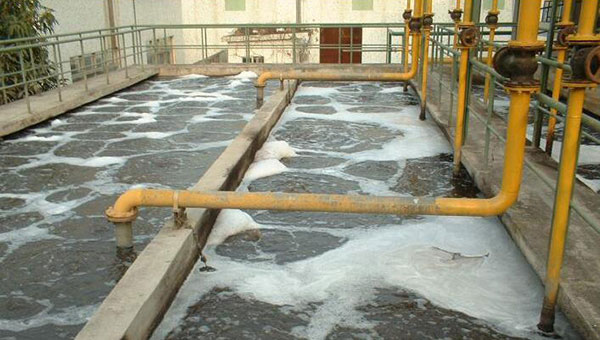At this stage, the foreign-trade dependence of China's leather industry relative to last year, the impact of the international financial crisis on China's leather industry has been presented. As well as export decrease and national macro - control, china leather enterprise have to face the pressure in environmental protection.
Tannery wastewater is a high concentration of organic wastewater, the main pollutant COD and high ammonia content, and disposal difficult than last year. The state of ammonia nitrogen control increasingly stringent, the problem of ammonia nitrogen pollution is more and more obvious, therefore, they have added new difficulties to tannery wastewater treatment. In accordance with national requirements, the new sewage discharge scale will expand.

Although the overall industry policy adjustments will bring great difficulties, but because of the different enterprises on the impact resistance of different policy adjustment, adapting to policy adjustment is a process of survival of the fittest, industrial agglomeration, accelerated environmental management, and extensive adoption of advanced technology. Needless to say, it is a great impetus for industry to accelerate the adjustment of industrial structure. From the world leather industry, the current issue of the leather industry should be encountered is the only way to improve the leather industry. However, if we can not curb the trend of China's leather industry transfer to Southeast Asia, India and other places, China's leather industry chain will lose its competitiveness. Thus, the leather enterprise and industry associations should work together to vigorously energy saving and reduce pollutant emissions, actively adjust the industrial structure, develop green leather industry.
Sewage treatment is restricting the continuous development of leather industry. These policies promote the footwear industry and the development of leather industry. Meanwhile, the industry chain end products to be extended and current industry layout to be built. Furthermore, enterprises to be guided to focus on the development of. And now the industry enterprises above designated size leather basically built a sound sewage treatment system, sewage treatment leather effect achieved significantly improved. Through technological transformation in recent years, the total amount of COD emissions has also been a greater degree of control. Meanwhile, China's leather industry, the vast majority of enterprises have been greatly improved on environmental awareness. Many enterprises in the early construction built sewage treatment plant firstly.and they realized that preventing pollution and Cleanly manufacturing are important.
At present, the new leather industry effluent standards has been introduced, national authorities to be introduced tannery access standards. Pollution is a significant problem for leather industry sustainable development. The national's standards and measures for controlling pollution, although bring a lot of cost pressures for tannery enterprises, and even some companies will collapse, However, it is undeniable that the leather enterprises must overcome this difficulty.
However, many entrepreneurs in the leather industry generally focus on one issue, which is now the standard for individual leather industry is too harsh. Such as the current standard CODCr level one standard is 100 mg, ammonia nitrogen standard is 15 mg/ L, according to the current wastewater treatment technology, it is difficult to achieve for tannery enterprises even if investment in environmental protection is great. That also reduce the enthusiasm of environmental management. The main character of environmental management and energy saving is enterprises, and only in the rationalization of policies and standards, enterprises can efficiently implement a planned and executed.
J.D. Leather Goods as a manufacturer of leather goods, it can not avoid the problem.of environmental management for sustainable development. In technology, we will continue to innovate and strengthen management, at the same time, we are going to transfer the development focus to deep process, precision and produce high value products.